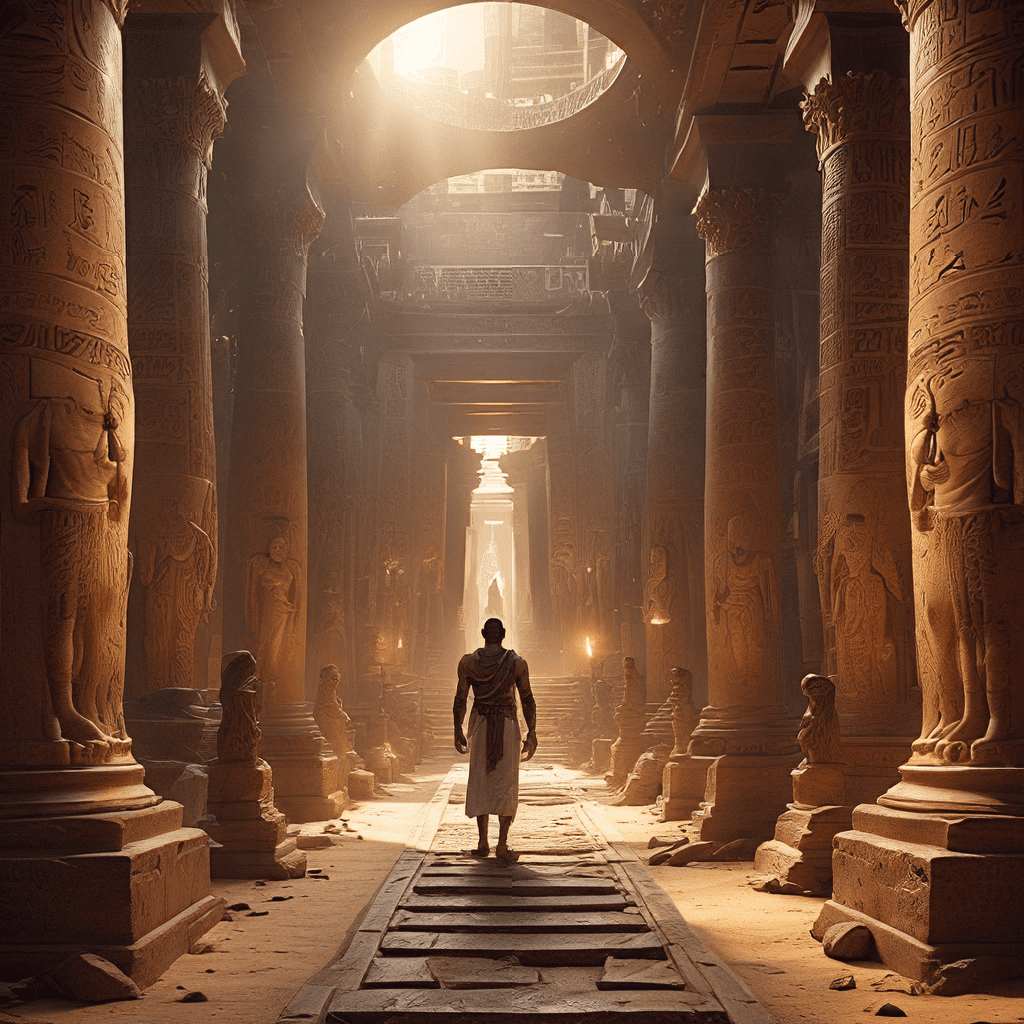1. Introduction: The Journey Beyond
The ancient Egyptians believed in a vibrant afterlife, a continuation of their existence beyond the physical realm. This belief permeated their lives, influencing everything from their daily rituals to the grand monuments they built. The journey to the afterlife, however, was not a simple passage. It was a perilous quest through the Underworld, a realm of trials, challenges, and divine judgment. This journey was a key aspect of Egyptian mythology and beliefs, reflecting their understanding of death, justice, and the cycle of life.
2. The Path to the Underworld
When an Egyptian died, the body was carefully prepared for the journey to the Underworld, known as the Duat. Elaborate rituals were performed to ensure a successful transition. This included the mummification process, where the body was preserved to prevent decay, and the placement of offerings and amulets in the tomb to guide the deceased. The heart, considered the seat of the soul, was carefully removed and weighed during a crucial ceremony called the Weighing of the Heart.
3. The Boat of the Sun: Ra’s Journey
The Sun God Ra played a vital role in the Egyptian afterlife. Each day, Ra sailed across the sky in his solar boat, bringing light and life to the world. As night fell, Ra descended into the Duat, embarking on a nightly journey through the Underworld. This journey was filled with darkness, dangers, and symbolic battles against the forces of chaos. Ra’s triumph over these challenges represented the triumph of order and light over darkness, mirroring the deceased’s own journey through the trials of the Underworld.
4. The Hall of Two Truths: Judgement and Justice
The Hall of Two Truths was a crucial juncture in the deceased’s journey. Here, they faced the divine judgment, a process guided by Anubis, Thoth, and Osiris. Anubis, the jackal-headed god of mummification and the Underworld, weighed the deceased’s heart against the feather of Ma’at, the goddess of truth and justice. Thoth, the god of wisdom and magic, recorded the outcome of the weighing. Osiris, the god of the Underworld, presided over the entire judgment. If the heart was found to be lighter than the feather, the deceased was deemed worthy of entering the Field of Reeds, a paradise in the afterlife.
5. The Weighing of the Heart: The Soul’s Fate
The Weighing of the Heart was a pivotal moment, determining the soul’s fate. This symbolic ceremony was meant to represent the deceased’s moral conduct in life. If their heart was heavy with negative deeds, it would outweigh the feather of Ma’at, condemning them to a fate worse than death. But if their heart was pure, it would be deemed worthy, and they would be allowed to enter the Field of Reeds, a paradise in the afterlife, where they would enjoy eternal life.
6. The Am-Duat: The Underworld’s Labyrinth
The Am-Duat was a vast, labyrinthine realm, a complex and dangerous underworld through which the deceased had to navigate. It was a realm of darkness, filled with terrifying creatures and trials meant to test the deceased’s strength, courage, and faith. This journey was depicted in complex paintings and texts found in tombs, describing the challenges and obstacles the deceased had to overcome. These included passing through perils like flames, serpents, and creatures guarding the passages, each representing a different aspect of the deceased’s earthly life.
7. The Trials of the Underworld
The journey through the Underworld was filled with trials and challenges. The deceased faced tests of their character, their knowledge of spells and rituals, and their ability to navigate treacherous landscapes. They had to confront their fears, overcome obstacles, and prove their worthiness to enter the afterlife. Spells, amulets, and offerings, inscribed on papyrus or worn around their neck, would assist them on this journey. These objects held magical powers to protect them from the dangers of the Underworld and guide them through its labyrinthine passages.
8. The Guardians of the Duat: Monsters and Deities
Guarding the Underworld were powerful creatures and deities, each with their own role in challenging the deceased’s journey. They tested the deceased’s courage, faith, and knowledge, guarding the passages to the afterlife and ensuring that only the worthy could pass. Some of these guardians were fearsome creatures, like the serpent Apep, who tried to devour Ra’s boat, or the demon Ammit, who awaited the souls with heavy hearts. Others were divine beings, like the goddess Hathor, who protected the deceased from the dangers of the Underworld, and the god Anubis, who guided their soul through the trials of the judgment hall.
9. The Final Destination: The Field of Reeds
For those who successfully navigated the trials of the Underworld and passed the judgment of Osiris, the Field of Reeds awaited them. This was a paradise, a place of eternal life and happiness. Here, the righteous souls enjoyed a life free from pain and suffering, indulging in eternal festivities and basking in the presence of the gods. The Field of Reeds was a place of peace and harmony, where the deceased could finally rest and enjoy the fruits of their virtuous life. This paradise was a testament to the Egyptian belief in a just and rewarding afterlife, a place where good deeds were rewarded and the righteous soul could find eternal peace.




